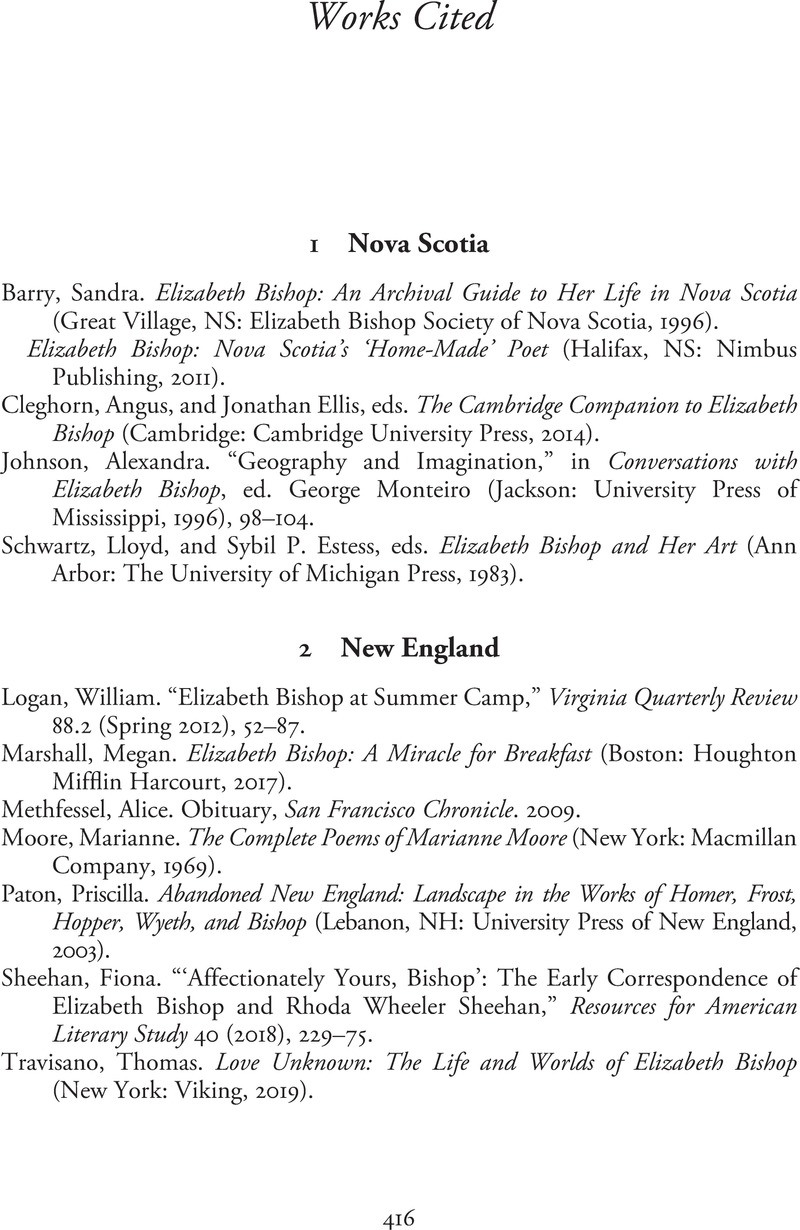Book contents
- Elizabeth Bishop in Context
- Elizabeth Bishop in Context
- Copyright page
- Contents
- Figure
- Contributors
- Acknowledgements
- Note on Referencing and Abbreviations
- Chronology
- Introduction
- Part I Places
- Part II Forms
- Part III Literary Contexts
- Part IV Politics, Society and Culture
- Part V Identity
- Part VI Reception and Criticism
- Works Cited
- Index
- References
Works Cited
Published online by Cambridge University Press: 06 August 2021
- Elizabeth Bishop in Context
- Elizabeth Bishop in Context
- Copyright page
- Contents
- Figure
- Contributors
- Acknowledgements
- Note on Referencing and Abbreviations
- Chronology
- Introduction
- Part I Places
- Part II Forms
- Part III Literary Contexts
- Part IV Politics, Society and Culture
- Part V Identity
- Part VI Reception and Criticism
- Works Cited
- Index
- References
Summary

- Type
- Chapter
- Information
- Elizabeth Bishop in Context , pp. 416 - 449Publisher: Cambridge University PressPrint publication year: 2021



